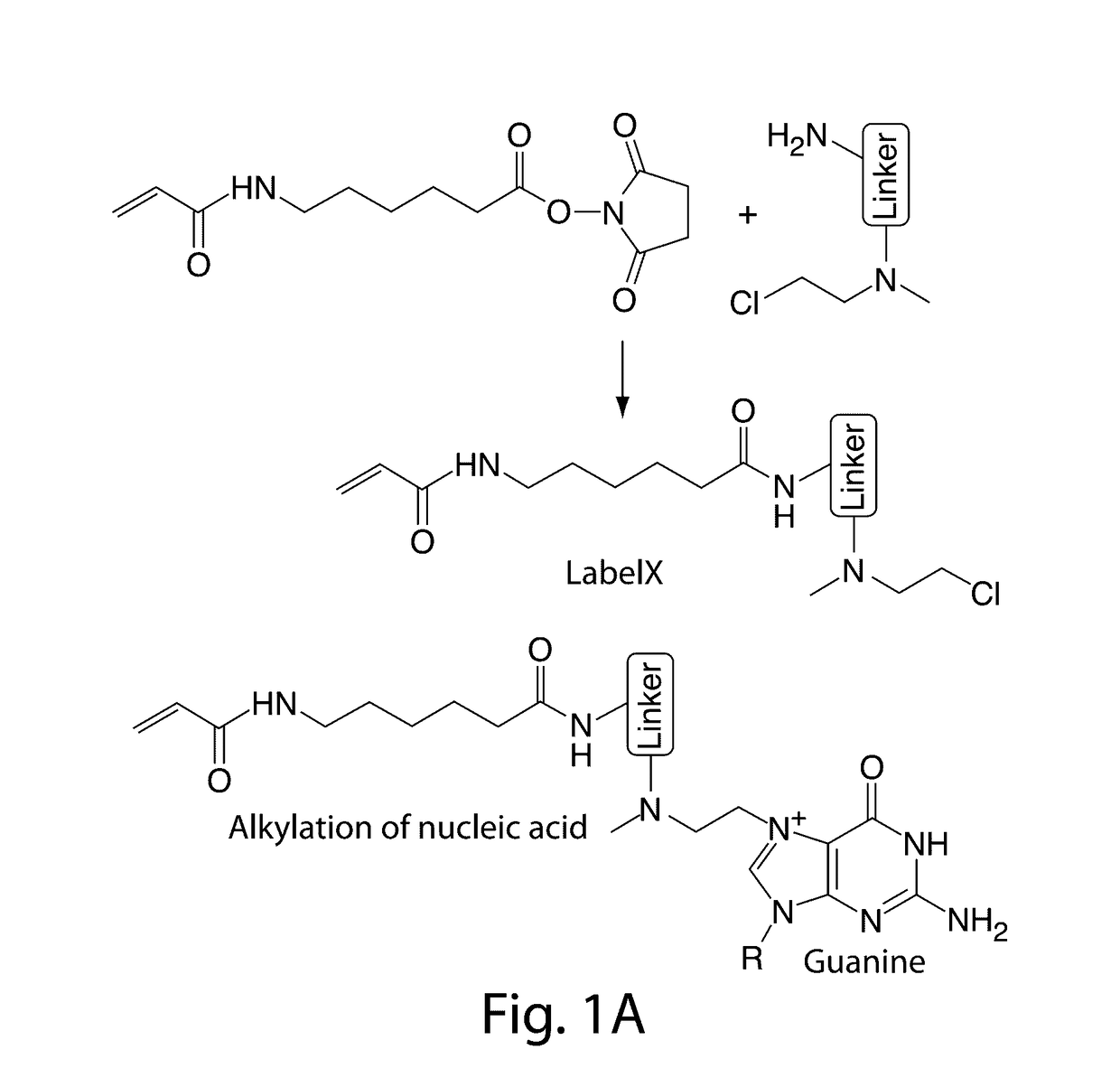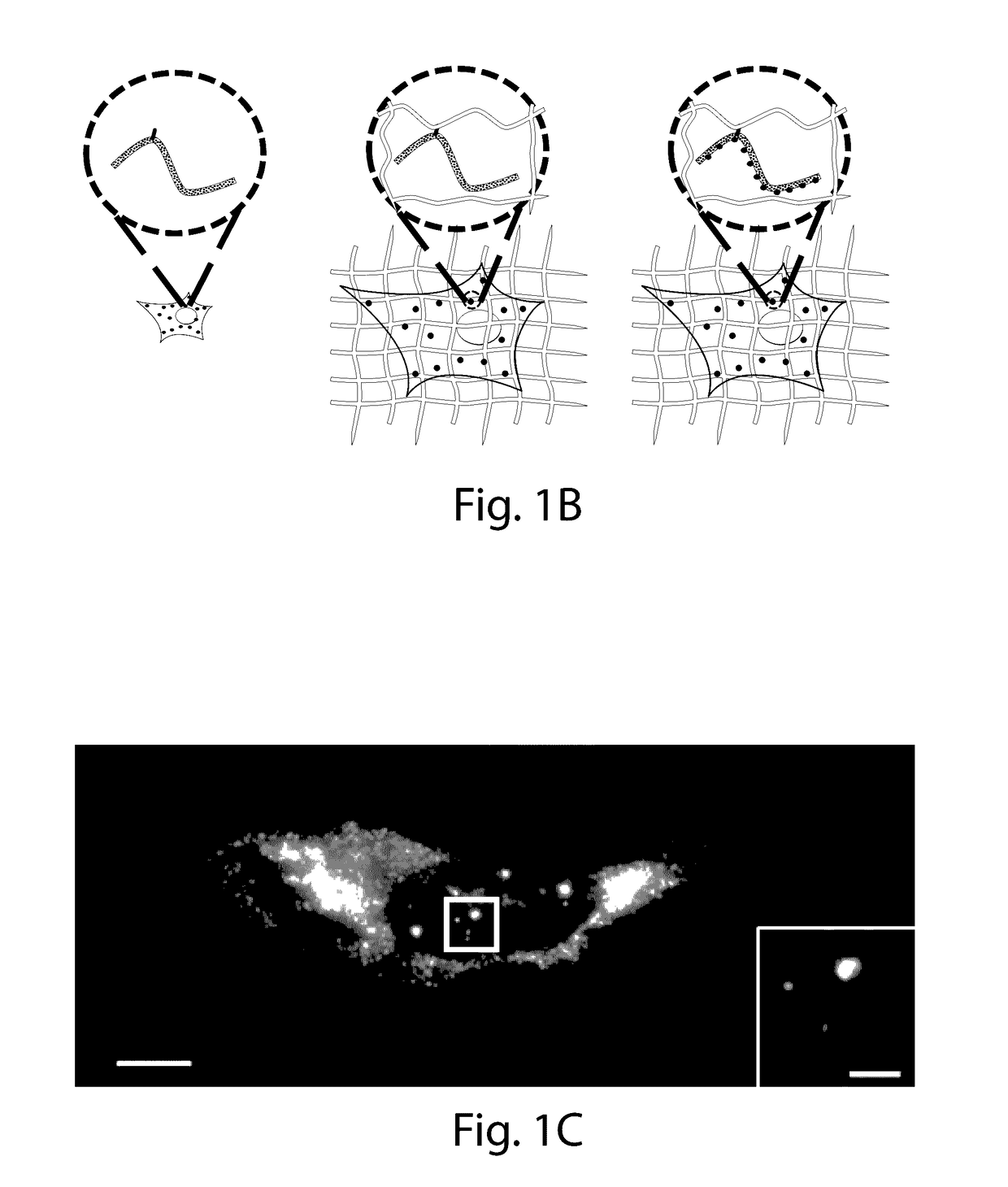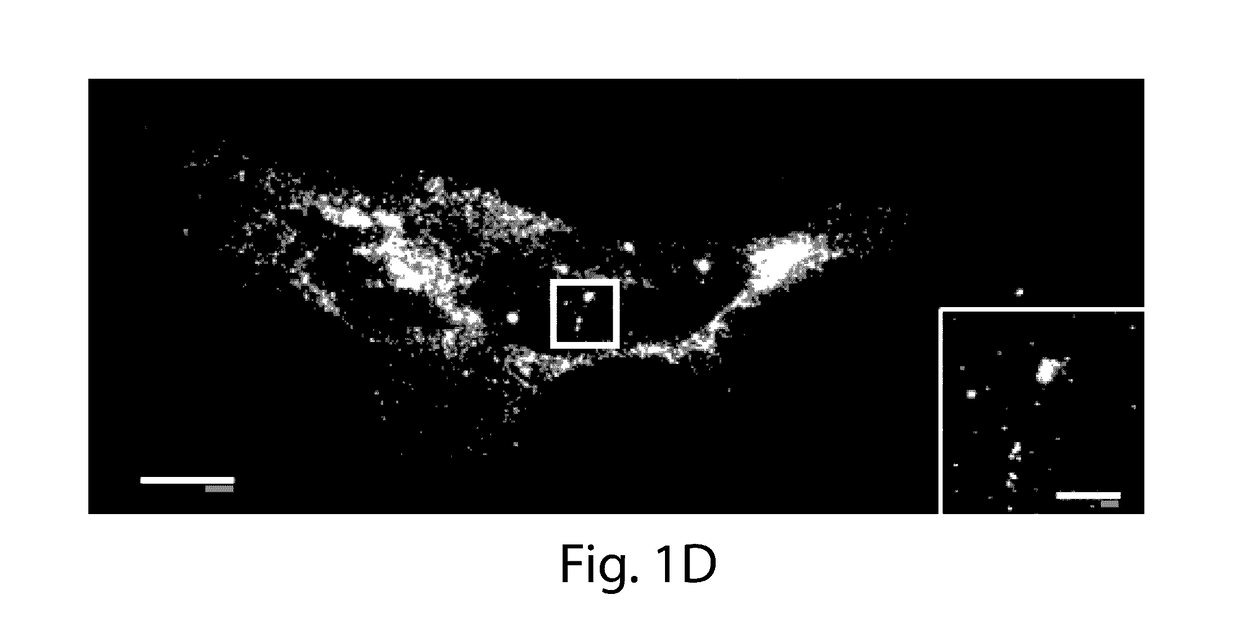Nanoscale Imaging of Proteins and Nucleic Acids via Expansion Microscopy
a technology of expansion microscopy and protein, applied in the field of nanoscale imaging of proteins and nucleic acids via expansion microscopy, can solve the problems of inability to image rna in intact tissues, inability to retain native proteins in gels, and inability to image genetically encoded fluorophores without antibody labeling
- Summary
- Abstract
- Description
- Claims
- Application Information
AI Technical Summary
Benefits of technology
Problems solved by technology
Method used
Image
Examples
Embodiment Construction
[0023]The present invention provides for the anchoring of nucleic acids into the swellable gel of Expansion Microscopy (ExM), both for in site genomic and transcriptomic assessment, as well as to enable nucleic acid barcodes to be used to identify essentially arbitrary numbers of molecules. International patent application serial number PCT / US15 / 16788, which is incorporated herein by reference, teaches that the resolution of conventional microscopy can be increased by physically expanding specimens, a process termed ‘expansion microscopy’ (ExM). In short, biological specimens are embedded in a swellable gel material, subjected to a treatment to disrupt native biological networks, and then expanded. The advantages to ExM include tissue clearing, resolution improvement, and higher tolerance to sectioning error due to the specimen expansion in the z-axis.
[0024]In ExM, fluorophores were anchored directly to the polymer gel, so that proteins could be visualized; however, RNA molecules we...
PUM
| Property | Measurement | Unit |
|---|---|---|
| Fraction | aaaaa | aaaaa |
| Temperature | aaaaa | aaaaa |
Abstract
Description
Claims
Application Information
 Login to View More
Login to View More - R&D
- Intellectual Property
- Life Sciences
- Materials
- Tech Scout
- Unparalleled Data Quality
- Higher Quality Content
- 60% Fewer Hallucinations
Browse by: Latest US Patents, China's latest patents, Technical Efficacy Thesaurus, Application Domain, Technology Topic, Popular Technical Reports.
© 2025 PatSnap. All rights reserved.Legal|Privacy policy|Modern Slavery Act Transparency Statement|Sitemap|About US| Contact US: help@patsnap.com



